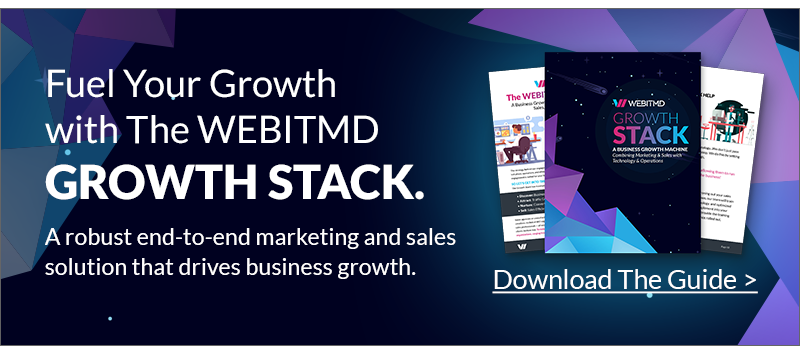Email is still one of the most valuable marketing channels to communicate and convert leads. According to Litmus, every $1 spent yields $42 in ROI. Email works – the key is making a personal, impactful connection.
Marketing automation has come to the rescue with the agility to create many types of email sequences to help you connect with your target audience at the right time with the right content. It gives you the power to convert, nurture leads down the funnel, and create company ambassadors.
But it all starts with understanding your audience and what they want from you.
The following examples will show you how to create some common email nurture sequences that are sure to reduce friction and build stronger relationships with your contacts.
Best Practices for Email Sequences
Before we dive any further, make sure to keep these best practices in mind before you build your nurture sequences:
- Why: Have a specific purpose and intention with every email. The right messaging is essential to create engagement and contextualize your goals.
- Who: Identify your target personas and know to whom you’re sending each communication. Is it people who have downloaded a particular eBook? Is it inactive leads over the past 90 days? Who your audience is will dictate your goals and messaging for each email.
- When: Think about the trigger(s) for your email sequence. What actions will the lead take, and what buying stage are they in? A user who fills out a newsletter form vs. a contact form will have a different intention, so act accordingly.
4 Types of Email Sequences To Use
#1: Welcome Series Emails
Mapping out your ideal funnel starts with, well, the start. These emails are usually the first communication you send to a lead or customer after they’ve opted into a subscriber form, loyalty program, or scheduled an appointment with you. Make that first impression count, as this can make or break whether they’ll open future emails from you.
Don’t be unnecessarily salesy here – instead, give them resources and helpful tips without any expectations. Just like any connection, these take time, so craft your emails around “Did you know?” or point them to blog articles and additional collateral over the next few weeks.
An example sequence could be…
- #1: Initial welcome email →
- #2: Get the most out of our product: here’s how →
- #3: Refer a friend and get 10% off your next purchase! →
- #4: Get social with us 🏁
This encourages your followers to interact and continue engaging with you. It’s also a great way to build trust in the beginning by being a helpful resource.
#2: Lead Nurturing Emails
The purpose of these emails is to establish trust with your new contact and help take the next step in their customer journey. Educate them on potential use cases or invite them to attend an upcoming webinar or live Q&A session for a service. The goal is to load them up with as much education as possible and quell any doubts or hesitations about taking the next step.
An example sequence could be…
- #1: Thanks for downloading our whitepaper; here it is in your inbox for future reference! →
- #2: Like our whitepaper? Then you’ll love these other resources. →
- #3: Invite to view a pre-recorded webinar around their specific topic (faces humanize your business!) →
- #4: Any questions? Our chatbot is available 24/7, and our team loves answering any inquiries about our product/service! 🏁
“These types of email sequences are merely a few you can implement to drive excellent customer experiences. Always experiment and add iteratively over time to get the best results – and don’t just “set it and forget it.” Go back, reflect, and make changes based on what you see.”
#3: Repeat Customer Emails
Having multiple sales from repeat customers is one of the best indicators that you’ve got a great product and service! The more information you have, the more you can customize automation to craft an excellent user experience.
For example, if a customer has placed another order, you can ensure automation delivers them an email with messaging thanking them for their business (again). Offering them an extra promotion or discount for being a repeat customer lets them know you appreciate their business.
#4: Abandoned Cart Emails
I am guilty of making purchases thanks to abandoned cart emails – and I bet you are, too. It’s nothing really to feel guilty about, but rather, understanding behavior and the mindset, “I’ll know if I want this if I’m still thinking about it in a few days.”
Creating a set of two to three reminder emails to check their cart or indicate lowered stock can drive urgency for a user to act. It also helps them know you’re thinking of those potential customers first before it goes out of stock, opening the possibility for loyalty and convenience.
Focus on Helping, Not Selling
These types of email sequences are merely a few you can implement to drive excellent customer experiences. Always experiment and add iteratively over time to get the best results – and don’t just “set it and forget it.” Go back, reflect, and make changes based on what you see.
Consider updating resources in these sequences or seeing if open rates drop off after a certain number of emails. This will give you the insights needed to make meaningful connections with your leads and turn them into happy (hopefully repeating) customers!
Download our growth stack guide if you’d like to learn more.






.jpg)



.jpg)





![5 Reports to Elevate Your HubSpot Sales Dashboard [+ Examples]](https://blog.webitmd.com/hs-fs/hubfs/Imported_Blog_Media/6-winning-examples-of-a-hubspot-sales-dashboard-2.png?width=767&name=6-winning-examples-of-a-hubspot-sales-dashboard-2.png)